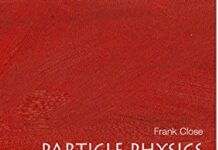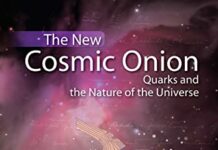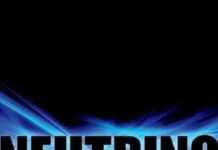
Ebook Info
- Published: 2009
- Number of pages: 177 pages
- Format: PDF
- File Size: 1.01 MB
- Authors: Frank Close
Description
What is ‘nothing’? What remains when you take all the matter away? Can empty space – a void – exist? This Very Short Introduction explores the science and the history of the elusive void: from Aristotle who insisted that the vacuum was impossible, via the theories of Newton and Einstein, to our very latest discoveries and why they can tell us extraordinary things about the cosmos.Frank Close tells the story of how scientists have explored the elusive void, and the rich discoveries that they have made there. He takes the reader on a lively and accessible history through ancient ideas and cultural superstitions to the frontiers of current research. He describes how scientists discovered that the vacuum is filled with fields; how Newton, Mach, and Einstein grappled with the nature of space and time; and how the mysterious ‘aether’ that was long ago supposed to permeatethe void may now be making a comeback with the latest research into the ‘Higgs field’.We now know that the vacuum is far from being empty – it seethes with virtual particles and antiparticles that erupt spontaneously into being, and it also may contain hidden dimensions that we were previously unaware of. These new discoveries may provide answers to some of cosmology’s most fundamental questions: what lies outside the universe, and, if there was once nothing, then how did the universe begin?ABOUT THE SERIES: The Very Short Introductions series from Oxford University Press contains hundreds of titles in almost every subject area. These pocket-sized books are the perfect way to get ahead in a new subject quickly. Our expert authors combine facts, analysis, perspective, new ideas, and enthusiasm to make interesting and challenging topics highly readable.
User’s Reviews
Reviews from Amazon users which were colected at the time this book was published on the website:
⭐Great overview of current physics related to “nothing” and the related concepts such as quantum fluctuation, kinetic and potential energy in a gravity well, the possible beginning of the universe. Very enlightening.
⭐This is the 12th book in the “Very Short Introduction” series that I have read and reviewed. Overall, I love the series, and hope to read many more, both those that have a primary focus in a scientific area, and those that are more historical or cultural. The quality is high, and they are, as the series implies, tightly written.I was somewhat disappointed by this work, however. Admittedly, as was no doubt the intention, I was “drawn in” by the title itself. A book about “nothing.” And true, the last word in the book is “void.” The author, Frank Close, does address the issue of “nothing” in about 20% of the book. For example, our current knowledge indicates that the universe is expanding, but what is it expanding INTO? What is beyond the limit of the current universe? Rutherford did his famous experiment with deflected and bouncing alpha particles, and realized that most of the atom is “empty.” But is it, what with quantum mechanics and concepts such as “dark energy”? I felt a tighter focus on those issues was what I would be getting.Instead, I received a lot of something, specifically a review of advancements in our scientific knowledge, from Newton through Einstein, with many familiar names along the way, from Maxwell to Bohr. I feel I can ALWAYS use a refresher course, with familiar aspects reinforced, and other new nuggets of insight and information becoming available on each read of this story, much like I might find in (yet another) book on the Vietnam War. In Close’s case, I find it comforting to again hear that many of the concepts of modern science are counterintuitive. Close briefly covers the concept of “lambda,” Hubble’s constant, which continues to nag me as a “Universal Fudge Factor,” a concept that always led to the right answer when I was a college sophomore.Structurally, I felt his review of scientific history was a pleasant meander, but lacked a rigid, purposeful framework. For example, sandwiched between Plank’s constant and Maxwell’s theory of electromagnetic radiation, Close treats us to the following factoid: “The electron in a hydrogen atom is apparently orbiting around the central proton at a speed of 1/137 of that of light. An orbit of 10 (to the minus 9th) metres at a speed of about a thousand kilometres per second implies some million billions circuits each second.” So? And how does that advance my understanding of the void?Still, there is the 20%, and my poor brain might have grasped a few concepts from the “Higgs vacuum.” Impressively, all of this was on the table, in 2009, when this book was published, three years before the confirmation of the existence of “God’s particle,” as it is sometimes called, the Higgs boson, with its massive weight that can arise in such a vacuum. In ways, some old concepts, such as “the ether,” are recycled and updated via concepts like the Higgs vacuum. It is beyond my powers of comprehension (and perhaps even interest) to consider how the universe was behaving at 10 to the minus 33 seconds after the Big Bang, when the temperatures were 10 to the 27 degrees (one assumes, Kelvin), but I do admire that very, very slender portion of humanity, an exclusive club, for sure, who contemplates such ideas… which may, in some off-hand way impact the mass of humanity, as Einstein’s early 20th century musings on a train have.I have found books such as “Exoplanets” and
⭐much more coherent and informative in terms of a cogent exposition of our current understanding of the universe. Close’s book was marred by meanders and redundancies. Still, a worthwhile read. 4-stars.
⭐This short book well discusses the physics of “emptiness,” though neglecting its psychological and phenomenological problematics. Towards the end it winds up with some speculations on why is there anything, such as “the compact universe emerged from the era of quantum gravity, which is when time took over from imaginary time” (p. 143). However, the real issue of “nothing” is why there exists anything at all. This is a matter for metaphysics and philosophy of the mind to ponder, not for physics – which has more than enough to do to try and understand what is, such as the nature of black energy and material.To the credit of the author, he mentions that our view of reality is “based on our macroscopic sense of time and three space dimensions” (ibid), to which should be added the amazing ability of some humans to think in terms of imaginary concepts put into symbolic, usually mathematical language, such as multi-dimensionality and multiverses, as well as explaining reality in terms that seem “magic” for most of us, such as quantum physics. He also, wisely, refers to what is “far beyond our conceptual ability” (ibid).But this is not enough. The idea of “nothing” is far beyond the domains of science. It requires exploration as part of metaphysics and of the philosophy of the embodies mind, which leads to recognition of inbuilt limits of maximal human understanding, including of “nothingness,” however our specie dislikes this line of thinking (as in part taken up in my recent book).This issue, put differently, also faces religions. No theology presumes to take up the question how God was created, discussing instead the transcendental in terms of negative theology and God as “eternal,” beyond human understanding, and to be taken on faith based on revelation.Accordingly, the book is mistitled: it should have been named “emptiness,” with the distinction between it and “nothing” being explained in the introduction. A short introduction on “nothing” in its real enigmatic sense, even if there may not be much to say on it, is still waiting to be written for the Oxford Short Introduction Series.Professor Yehezkel DrorThe Hebrew University of Jerusalem
⭐I liked to the book, it provides good insights on what could be the void and how it is essential for out universe, and it shows the limits of our current understanding. The void is much more than we think.On the other hand, and maybe because it is a space that lies on the current edge of our understanding, some of the concepts and ideas rely on having strong understanding of quantum physics or quantum mechanics, or at least for me , in concepts i have not internalised , so it took me longer to read as i had to stop, re-read or even take time to investigate some concepts. And i have to say, some of the stuff may have gone over my head as there are some areas were i could not understand.In overall , good book, good presentation, but sometimes goes down some concepts to fast or assuming a knowledge that not all reader may have (like me). Maybe it is the only way to keep a book like this to have less than 1000pages or more than 1000 formulas…Recommended for sure
⭐I liked the way mathematics and physics is evolving to answer the big questions currently beyond comprehension. very well written for the reader with little mathematical or physics knowledge or background
⭐A superb book if you are interested in the sub-atomic world and what it tells us about the universe as a whole(?). A question that has been posed by scientists since the ancient Greeks is ‘What is is a vacuum? What is left when everything has been removed?’ Professor Close gives a lucid, highly readable explanation – but I will not spoil your enjoyment. Buy the book and read it for yourself. It is very cheap and one of the best of this excellent series.
⭐Nothing or void is an interesting and semingly simple topic. In fact, the vacuum is not void; it is filled with seething virtual particles. Vividly written, this book offers to examine the science of the nature of empty space and its implication for understanding the creation of cosmos.In relation to the big-bang, there are very useful overview of the special/general theory of relativity and quantum theory. Modern physics suggests that it is possible that the universe could have emerged out of quantum fluctuation in the vacuum. Good read!
⭐Nice little book. Double check the size of this book as it is smaller than what you might call a conventional paper back and the type face slightly smaller. My eye sight is not “bad” but if you struggle to read smaller font sizes this might be a problemLanguage used is easy to understand for someone like me who reads this kind of thing out of interest but does not study it.
⭐I had the opportunity to attend a highly informative Lecture at Dartford Grammar School, a number of years ago, given by Frank Close. This little book manages to engage & deliver, covering a broad spectrum, paving the way for those who wish to pursue further.
⭐Frank Close does a wonderful job for the non-physicist that I am in giving meaning to the idea of ‘ nothing’. I have not completed it yet – there is still a last chapter remaining and I relished it, The questions that I was asking myself before starting this book ultimately were stated there by the author himself.Some questions come to mind: can time be there without matter or stretching it further ,without energy?
Keywords
Free Download Nothing: A Very Short Introduction (Very Short Introductions) in PDF format
Nothing: A Very Short Introduction (Very Short Introductions) PDF Free Download
Download Nothing: A Very Short Introduction (Very Short Introductions) 2009 PDF Free
Nothing: A Very Short Introduction (Very Short Introductions) 2009 PDF Free Download
Download Nothing: A Very Short Introduction (Very Short Introductions) PDF
Free Download Ebook Nothing: A Very Short Introduction (Very Short Introductions)




